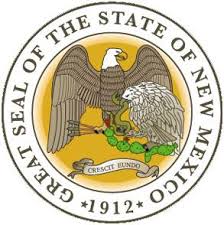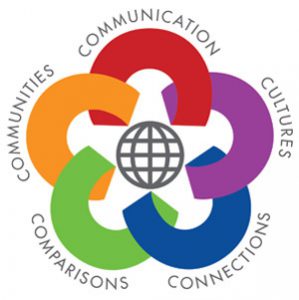"Querer es poder."
World-Readiness Standards
K-12 World-Readiness Standards Effective July 1, 2018
6.29.8. PRIMARY AND SECONDARY EDUCATION STANDARDS FOR EXCELLENCE WORLD-READINESS STANDARDS FOR LEARNING LANGUAGES
The purpose of the American Council on the Teaching of Foreign Languages (ACTFL)’s world readiness standards for learning languages, as reflected herein, is to ensure all K-12 students are prepared with 21st-century skills that will enable success in college, careers, and within local and global multilingual communities.
A. Interpersonal communication: Learners interact and negotiate meaning in spoken, signed, or written conversations to share information, reactions, feelings, and opinions.
B. Interpretative communication: Learners understand, interpret, and analyze what is heard, read, or viewed on a variety of topics.
C. Presentational communication: Learners present information, concepts, and ideas to inform, explain, persuade, and narrate on a variety of topics using appropriate media and adapting to various audiences of listeners, readers, or viewers.
[6.29.8.8 NMAC – Rp, 6.29.8.8 NMAC, 07/01/2018]
A. Relating cultural practices to perspectives: Learners use the language to investigate, explain, and reflect on the relationship between practices and perspectives of the cultures studied.
B. Relating cultural products to perspectives: Learners use the language to investigate, explain, and reflect on the relationship between the products and perspectives of the culture studied.
[6.29.8.9 NMAC – Rp, 6.29.8.9 NMAC, 07/01/2018]
A. Making connections: Learners build, reinforce, and expand their knowledge of other disciplines while using the language to develop critical thinking to solve problems creatively.
B. Acquiring information and diverse perspectives: Learners access and evaluate information and diverse perspectives that are available through the language and its cultures.
[6.29.8.10 NMAC – Rp, 6.29.8.10 NMAC, 07/01/2018]
A. School and global communities: Learners use the language both within and beyond the classroom to interact and collaborate in their community and the globalized world.
B. Lifelong learning: Learners set goals and reflect on their progress in using languages for enjoyment, enrichment, and advancement.
[6.29.8.12 NMAC – N, 07/01/2018]
Rule_6.29.8_NMAC_World Readiness Standards for Learning Languages
Effective Date July 1, 2018




